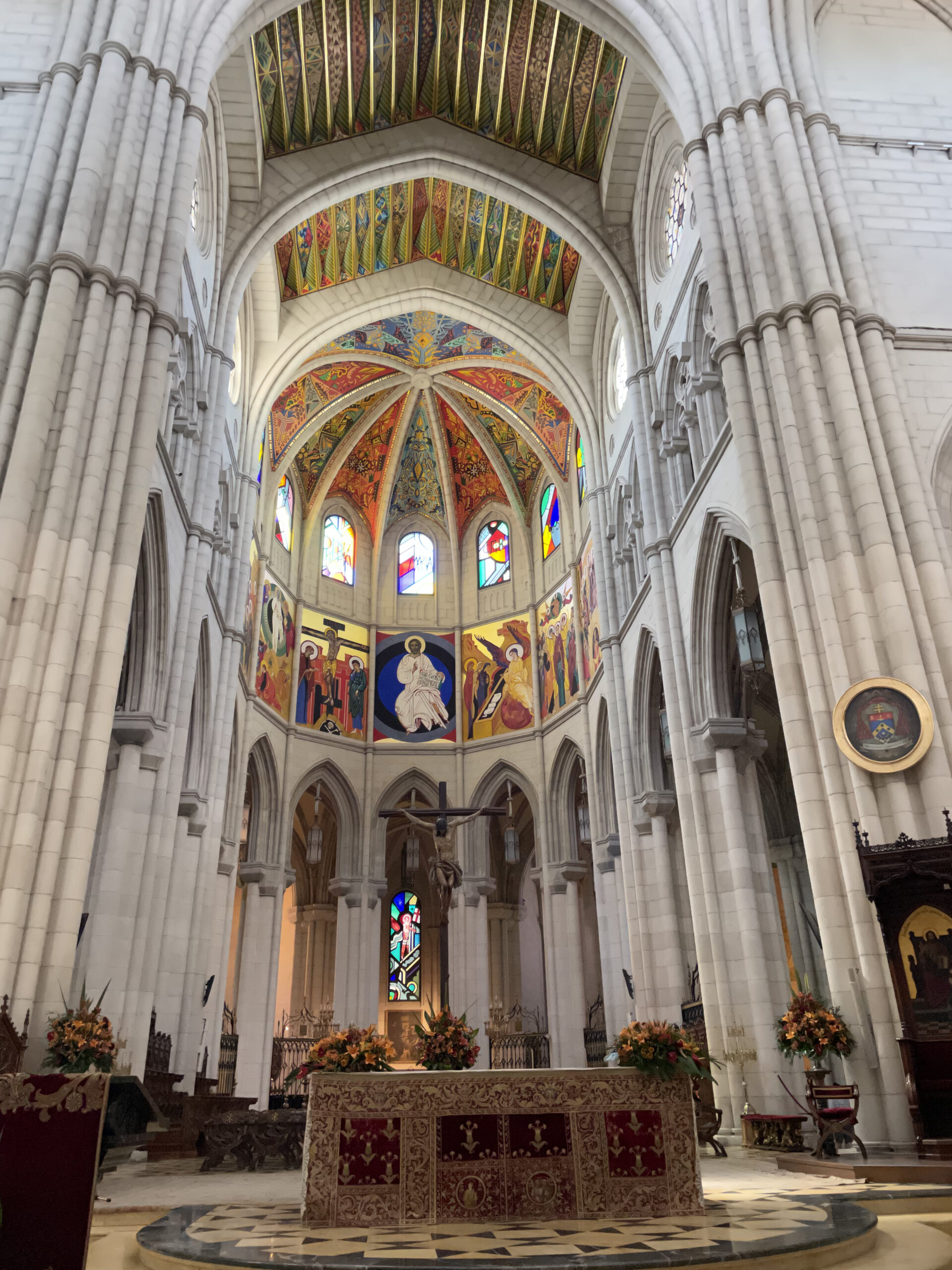
Almudena Cathedral
Almudena Cathedral was one of the many sites I visited during my day trip to Madrid, Spain. The cathedral was built to be dedicated to the Virgin of Almudena, the patron saint of Madrid. Construction of the cathedral began in 1879, but it was not completed until 1993 due to numerous interruptions and delays. The original plans for the cathedral were designed in a neo-Gothic style. Still, during the 20th century, the plans were revised to include neo-Romanesque and neo-Baroque architectural elements. The cathedral was consecrated by Pope John Paul II in 1993, and it is one of the newest cathedrals in Europe. It is also one of the largest cathedrals in Spain, with a capacity of up to 6,000 people. I was amazed by the cathedral’s interior since it’s decorated with beautiful stained glass windows, frescoes, and sculptures, created by some of the most renowned artists of the day. One of the most notable features of the cathedral is the extensive altarpiece, designed by the Spanish artist Luis Fernando Benedito.
